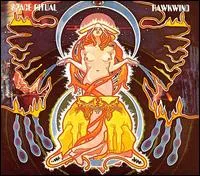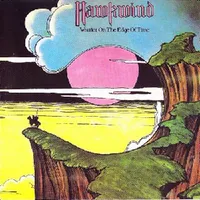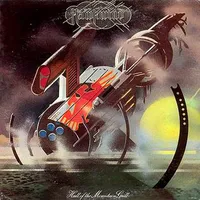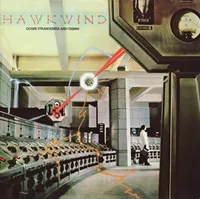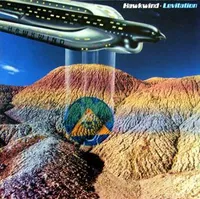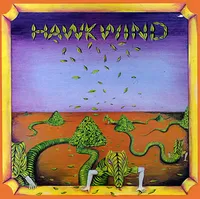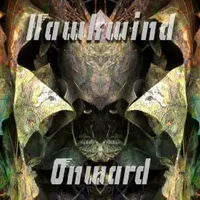An astronaut's guide to space exploration: The Hawkwind albums you should definitely listen to
For more than half a century, Hawkwind's ever-changing line-up of space rockers has consistently created challenging and highly influential albums
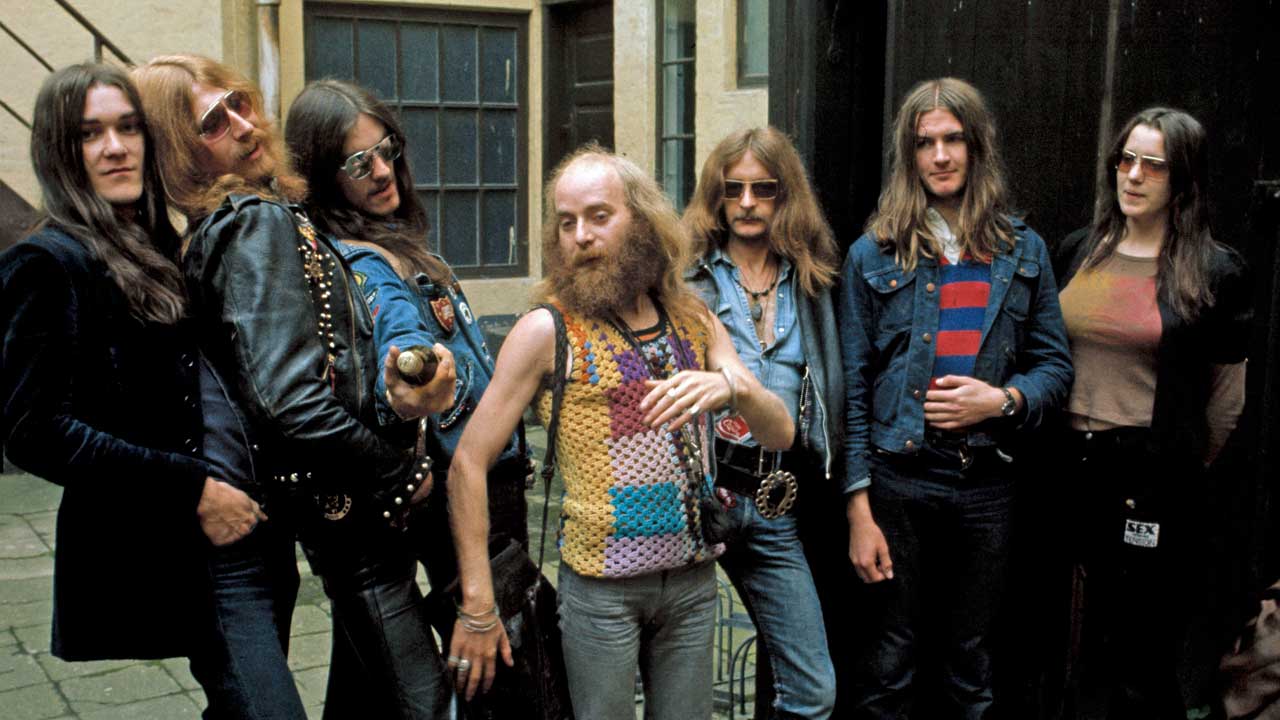
Pioneers of space rock, Hawkwind took psychedelia, blues and garage and turned it into a style of music that has resonated down the decades, influencing countless bands. Not bad for a bunch of guys who were so haphazard when they played their first gig in 1969 – gatecrashing a local talent night in the Notting Hill area of London – that they didn’t even have a name.
Since then Hawkwind have had more than 50 members, with only founder and guiding light Dave Brock remaining a constant. Among those who’ve passed through the Hawk portals include Lemmy, Robert Calvert, Ginger Baker and Michael Moorcock. And let’s not forget exotic dancer Stacia, or the Liquid Len light show.
The band were at their commercial peak in the 70s, when albums such as In Search Of Space (’71), Hall Of The Mountain Grill (’74), Warrior On The Edge Of Time (’75) and Quark, Strangeness And Charm (’77) gave them a consistent presence in the Top 30.
Perhaps the most celebrated line-up was the one that recorded 1973’s classic Space Ritual live album, the release that gave the band their highest-charting hit, making No.9. It featured Brock (guitar/vocals), Calvert (vocals), Lemmy (bass), Dik Mik and Del Dettmar (synths), Simon King (drums) and Nik Turner (sax/flute/vocals).
Hawkwind had only one big hit single, 1972’s Silver Machine, which reached No.3. But while they’ve rarely bothered the singles chart they have come up with a succession of iconic anthems.
In 1978, problems brought on by mental and drug-related issues led to the band splitting up. They returned a year later. The new-look incarnation went through another creative surge, with 1980’s Levitation another high spot. While 1982’s Choose Your Masques was their last Top 30 album, the band have carried on making challenging music. A revolving-door line-up has helped Hawkwind survive all trends. Sticking to the policy of pursuing their own vision, 1985’s The Chronicle Of The Black Sword and 2012’s Onward albums were triumphs.
Hawkwind’s stock is probably higher now than at any time since the 1970s – they’re still creating fresh music, and they’ve also reissued their most acclaimed albums, introducing these classics to a new generation. So if you’ve ever wondered where to begin your space rock explorations, here’s our handy star map.

If a live album is supposed to sum up a band’s career to that date, then this one more than does the job for Hawkwind. One of the most iconic of all double live albums, it was recorded in Liverpool and Newcastle in 1972 on the Doremi Fasol Latido tour.
As you’d expect, much of the set comes from that particular studio album, with three new songs included to add further spice. And the presence of electronic and spoken-word interludes linking the music together adds to the atmosphere. The band were at the peak of their powers at these shows – so much so that the absent Silver Machine was hardly missed.
Warrior On The Edge Of Time (Atomhenge, 1975)
The pinnacle of Hawkwind’s creativity. They worked closely with fantasy author Michael Moorcock on this album, which is based on his Eternal Champion concept, and it has an ingenuity that makes it a classic.
Every song is both self-contained yet part of an overall flow that really does make it a space-rock opera. The band even doffed the cap towards 19th-century poets Percy Shelley and Henry Wadsworth Longfellow on opening track Assault & Battery (Part 1), while Moorcock himself contributed three poems, narrating two of them. The album’s artwork added to the fusion of brilliance.
Hall Of The Mountain Grill (EMI, 1974)
One of the band’s most cohesive albums, it combined the pure rock of The Psychedelic Warlords (Disappear In Smoke) with the psychedelic flux of Web Weaver and the ambient title track.
The production, by Roy Thomas Baker, adds an extra dimension, augmenting the band’s musical ambition. They even included two live jams, which added a welcome spontaneous sensibility. Incidentally, the title comes from a play on Grieg’s classical masterpiece In The Hall Of The Mountain King and the name of a café in West London. That disparate combination neatly sums up the album.
Astounding Sounds, Amazing Music (Atomhenge, 1976)
In a way, this was a concept album, paying tribute to the pulp science fiction magazines of the 1930s and 40s, with each song telling a self-contained sci-fi story.
It worked, too, because, for the first time, all of the members of the band were involved in the songwriting and musical arrangements. The performances took Hawkwind to a new level, pulling them out of the underground. Reefer Madness, Kerb Crawler and Steppenwolf were highlights, while the cover design added to the sense of sci-fi nostalgia, but with a biting sense of parody.
Quark, Strangeness And Charm (Atomhenge, 1977)
Despite the title, this was actually almost a light-hearted Hawkwind album, with the music taking a more obviously commercial direction.
Spirit Of The Age has a strong melodic hinge, while Hassan I Sabbah possesses distinct Middle Eastern overtones, mixing legend and modern politics, and The Days Of The Underground wistfully looked back at the early days of the band. Robert Calvert’s wordplay as a member of Hawkwind reached its peak here, while the musicianship had a mannered yet edgy coherence.
This album had a mix of styles and ideas, harking back to the band’s formative days, but also expressing a forward-thinking attitude. Without Calvert, the lyrics were more rooted in reality, with Who’s Gonna Win The War? and Motorway City examples of Brock’s ability to write in an accessible manner.
There’s a balance between instrumental pieces and vocal tracks, while Ginger Baker gives everything added power. Tim Blake also made his recording bow with Hawkwind here, and his keyboard style was perfect for the early 70s atmosphere that was matched by a contemporary restlessness.
Much of their debut was given over to an extended instrumental jam called Sunshine Special, which was divided into five pieces. This mirrored the band’s live approach, which was based on jamming – Hawkwind wanted to create the experience of an acid trip through music, and this was certainly the effect the album had.
The band were also clever enough to wind down Paranoia – Part 1 at the end of side one on the original vinyl edition, and then pick it up for Paranoia – Part 2 at the start of side two. The coruscating Hurry On Sundown, which opened the album, was a more conventional song and it became an early fan favourite.
The Chronicle Of The Black Sword (Atomhenge, 1985)
As with Warrior On The Edge Of Time, the inspiration for this album was a character created by Michael Moorcock. This time it was Elric Of Melnibone, although the song Needle Gun was based on Jerry Cornelius, another Moorcock creation.
The conceptual nature of the album suited the band, who took space rock out of its 70s bubble and reimagined it for the new decade. Guitarist Huw Lloyd-Langton and keyboard player Harvey Bainbridge gave it freshness and sparkle, while the lyrics indulged in Moorcockian complexity. After losing their way a little, Hawkwind were back in the groove.
2010’s Blood Of The Earth suggested that Hawkwind were ready for another burst of engaging creativity, and then it was more fully realised on this double album. Encapsulating all aspects of what had made the band crucial to the soundtrack of the 70s, it kicks off with the almost metallic Seasons.
Electric Tears has hints of the Levitation era, Mind Cut has an affecting ambience, and The Flowering Of The Rose is a high-grade Hawkwind moment. A few old songs are revisited, with Green Finned Demon and Death Trap both benefiting from 21st-century treatments. Not a classic, but closer than they’d been for over two decades.
...and one to avoid
You can trust Louder
Electric Tepee (Essential, 1992)
Sometimes an aggressively experimental approach can go hideously wrong. Which is what happened here. The band were reduced to a trio shortly before recording Electric Tepee, and they tried to augment their sound with the misguided use of synths and computers. It was a mess.
The threesome of Dave Brock, Alan Davey and Richard Chadwick were so short of ideas that the lyrics for the song Mirror Of Illusion from the 1970 debut were reused on Mask Of The Morning. The attempt to coalesce rock with an ambient mood never convinces, and you’re left with the impression that Hawkwind quickly realised it wasn’t going to work.
Sign up below to get the latest from Classic Rock, plus exclusive special offers, direct to your inbox!
Malcolm Dome had an illustrious and celebrated career which stretched back to working for Record Mirror magazine in the late 70s and Metal Fury in the early 80s before joining Kerrang! at its launch in 1981. His first book, Encyclopedia Metallica, published in 1981, may have been the inspiration for the name of a certain band formed that same year. Dome is also credited with inventing the term "thrash metal" while writing about the Anthrax song Metal Thrashing Mad in 1984. With the launch of Classic Rock magazine in 1998 he became involved with that title, sister magazine Metal Hammer, and was a contributor to Prog magazine since its inception in 2009. He died in 2021.
